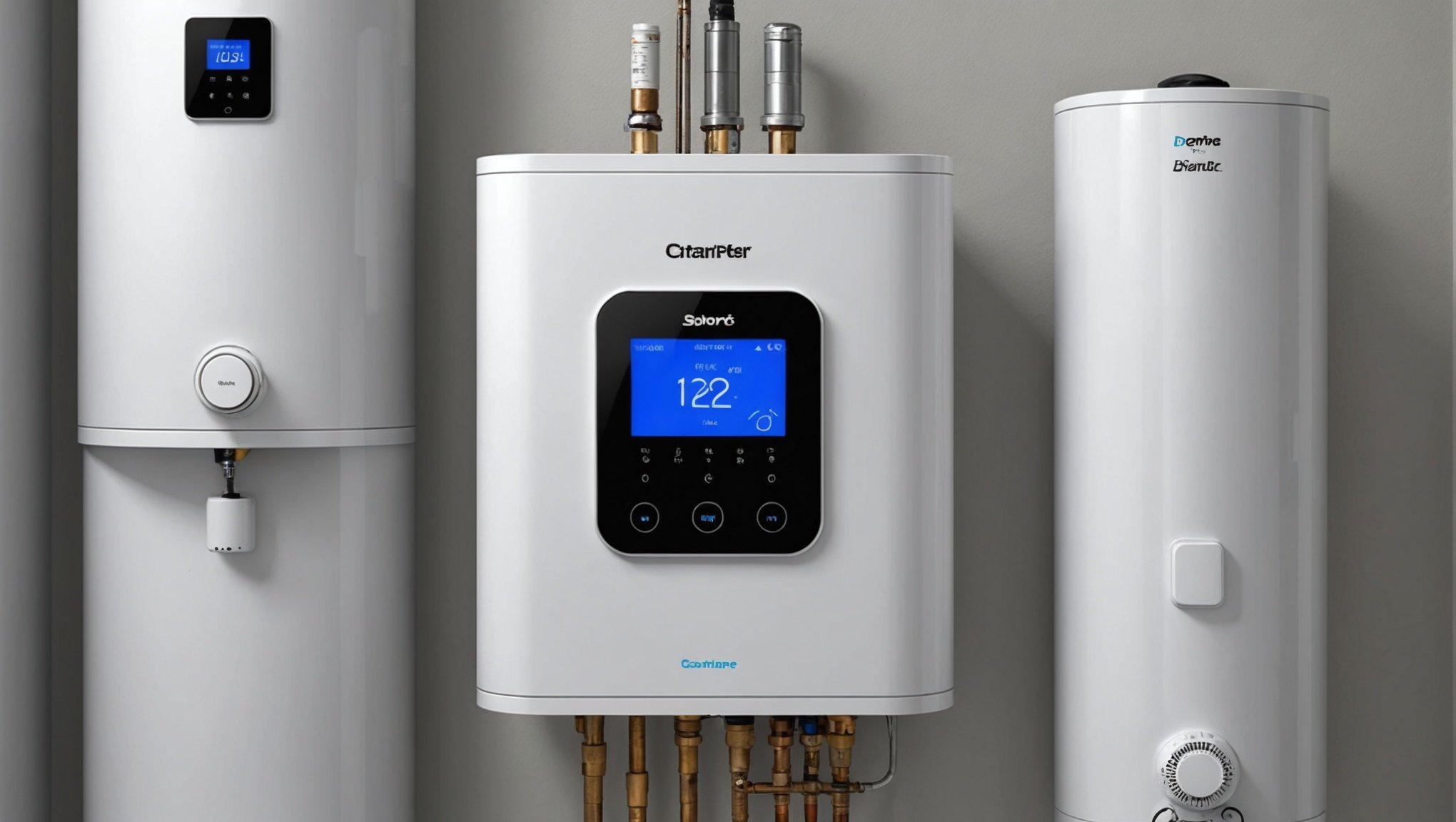Smart home water heaters offer a seamless way to manage your home's hot water needs. With smartphone integration, you can monitor usage, set schedules, and adjust temperatures from anywhere. This technology not only enhances convenience but also promotes energy efficiency, helping you save money on utility bills. Discover how mastering these systems can elevate your home comfort while providing insight into your consumption habits, making maintenance easier than ever. Embrace the future of home management with smart water heaters and take control of your energy use today.
Overview of Smart Home Water Heaters
Smart home water heaters are innovative appliances designed to enhance energy efficiency and user convenience. These devices integrate smart technology to provide a seamless experience in managing household water heating needs. Unlike traditional water heaters, smart versions come equipped with features that allow for remote control and monitoring via smartphone apps. This enables users to adjust temperature settings and track energy consumption from anywhere, ensuring optimal performance and energy savings.
In parallel : Mastering Smartphone Security: Essential Tips to Safeguard Your Online Shopping Experience
Key features of smart home water heaters include Wi-Fi connectivity, which facilitates real-time alerts and diagnostics. This connectivity allows for timely maintenance, reducing the risk of unexpected breakdowns. Additionally, some models offer learning capabilities that adapt to the household's water usage patterns, further enhancing efficiency.
The benefits of integrating smart technology into water heating systems are numerous. Users can enjoy lower energy bills due to the system's ability to optimise heating schedules based on usage patterns. Furthermore, smart water heaters contribute to a more sustainable lifestyle by reducing unnecessary energy consumption. The convenience of remote control and the peace of mind from real-time updates make smart home water heaters a compelling choice for modern households. By embracing this technology, homeowners can enjoy both comfort and cost savings.
In parallel : Mastering Real-Time Cryptocurrency Trading: A Step-by-Step Guide to Using Your Smartphone
Smartphone Control and Monitoring Features
Smart home water heaters have revolutionised how we manage our water heating needs with smartphone control and monitoring features. These capabilities allow users to adjust settings effortlessly through dedicated apps, bringing convenience to their fingertips. With app integration, homeowners can set precise temperatures, schedule heating times, and even turn their water heaters on or off remotely.
Several popular apps facilitate these controls, each offering unique features tailored to enhance user experience. For instance, some apps provide intuitive interfaces that allow users to monitor energy consumption patterns, helping them make informed decisions about their usage. Others offer customisable alerts to notify users of any maintenance needs, ensuring the longevity and efficiency of the appliance.
Real-time monitoring is a standout feature, empowering users with instant updates on their water heater's performance. Notifications can alert homeowners to potential issues, such as leaks or irregular temperature changes, allowing for prompt action and preventing costly repairs. This proactive approach not only maintains optimal functionality but also contributes to energy savings by promoting efficient usage.
By leveraging smartphone control and monitoring features, users can enjoy a seamless, connected experience with their smart home water heaters, enhancing both convenience and peace of mind.
Comparison of Popular Smart Water Heater Models
Exploring the smart water heater comparison landscape reveals a variety of top models that cater to different needs and preferences. By examining product reviews, we can identify the most suitable options for diverse households.
Model 1 Overview
Model 1 stands out for its advanced energy efficiency features, making it a favourite among eco-conscious users. It boasts an intuitive interface and robust Wi-Fi connectivity, allowing seamless integration with smart home systems. Users appreciate its ability to learn from usage patterns, optimising performance while reducing energy consumption.
Model 2 Overview
Model 2 is renowned for its affordability and value, offering a blend of essential smart features without breaking the bank. It includes basic remote control capabilities and real-time monitoring, ensuring users can maintain control over their energy usage. While it may lack some advanced features, its reliability and lower price point make it a popular choice.
Model 3 Overview
Model 3 excels in user reviews for its comprehensive feature set and high performance. It includes advanced diagnostics and customisable alerts, enhancing user experience and ensuring longevity. Although it comes at a higher price, users find its extensive capabilities and robust build justify the investment.
Installation and Setup Process
Setting up a smart water heater can be straightforward with the right installation tips and a comprehensive setup guide. The process typically begins with selecting an appropriate location, ensuring it is near necessary plumbing and electrical connections.
Step-by-Step Installation Guide
- Turn off power and water supply: Safety first. Ensure all power and water sources are off before beginning installation.
- Mount the heater: Follow the manufacturer's instructions to securely mount the heater, ensuring it is level.
- Connect plumbing: Attach the water inlet and outlet pipes, using appropriate fittings to prevent leaks.
- Electrical connections: Connect the heater to the power supply, adhering to local electrical codes.
- Wi-Fi setup: Follow the app's instructions to connect the heater to your home network.
Common Challenges and Troubleshooting
During setup, users may encounter issues like Wi-Fi connectivity problems or minor leaks. Ensuring all connections are tight and following troubleshooting steps in the manual can resolve most issues.
Professional Installation vs. DIY Considerations
Opting for professional installation can save time and ensure compliance with local regulations, though it comes at a cost. A DIY approach suits those comfortable with basic plumbing and electrical work, offering a cost-effective alternative.
Cost Savings and Energy Efficiency
Smart water heaters are transforming the way households achieve cost savings and enhance energy efficiency. By integrating smart technology benefits, these devices optimise energy usage, resulting in significant financial advantages.
Smart water heaters can lead to substantial cost savings by reducing unnecessary energy consumption. Through precise temperature control and usage pattern analysis, these systems ensure energy is only used when needed. This efficiency translates to lower utility bills, making a noticeable difference in monthly expenses.
The impact on energy consumption is profound. Smart water heaters adjust their operation based on real-time data, such as household water usage trends. This adaptability means they operate at peak efficiency, reducing the overall energy footprint. In a world increasingly focused on sustainability, this feature is a major draw for environmentally conscious consumers.
Long-term financial benefits are another key advantage. While the initial investment in a smart water heater may be higher than traditional models, the ongoing savings in energy costs can offset this over time. Furthermore, the extended lifespan and reduced maintenance needs of smart water heaters contribute to their cost-effectiveness. Embracing smart technology in water heating systems not only benefits the environment but also offers enduring economic rewards.
Troubleshooting and Maintenance Tips
Maintaining a smart water heater requires attention to detail and proactive care to ensure longevity and efficiency. Understanding common issues and their resolutions can save time and resources.
Common Issues and Resolutions
Smart water heaters may experience Wi-Fi connectivity problems, which can often be resolved by resetting the router or checking the network settings within the app. Leaks are another concern; ensure all connections are tight and use appropriate fittings to prevent them. If the heater fails to heat water adequately, verify the temperature settings and inspect the heating elements for faults.
Maintenance Best Practices
Regular maintenance is crucial for optimal performance. Periodically check for sediment build-up in the tank, which can affect efficiency. Flushing the system annually helps maintain clean operation. Additionally, inspect anode rods and replace them if necessary to prevent corrosion. Keeping the exterior clean and ensuring vents are unobstructed also contribute to efficient functioning.
Resources for Further Support
For more detailed guidance, consult the manufacturer's manual, which provides specific maintenance tips and troubleshooting steps. Online forums and customer support lines are valuable resources for additional assistance. Engaging with these resources ensures your smart water heater remains in excellent condition, providing reliable service for years to come.











